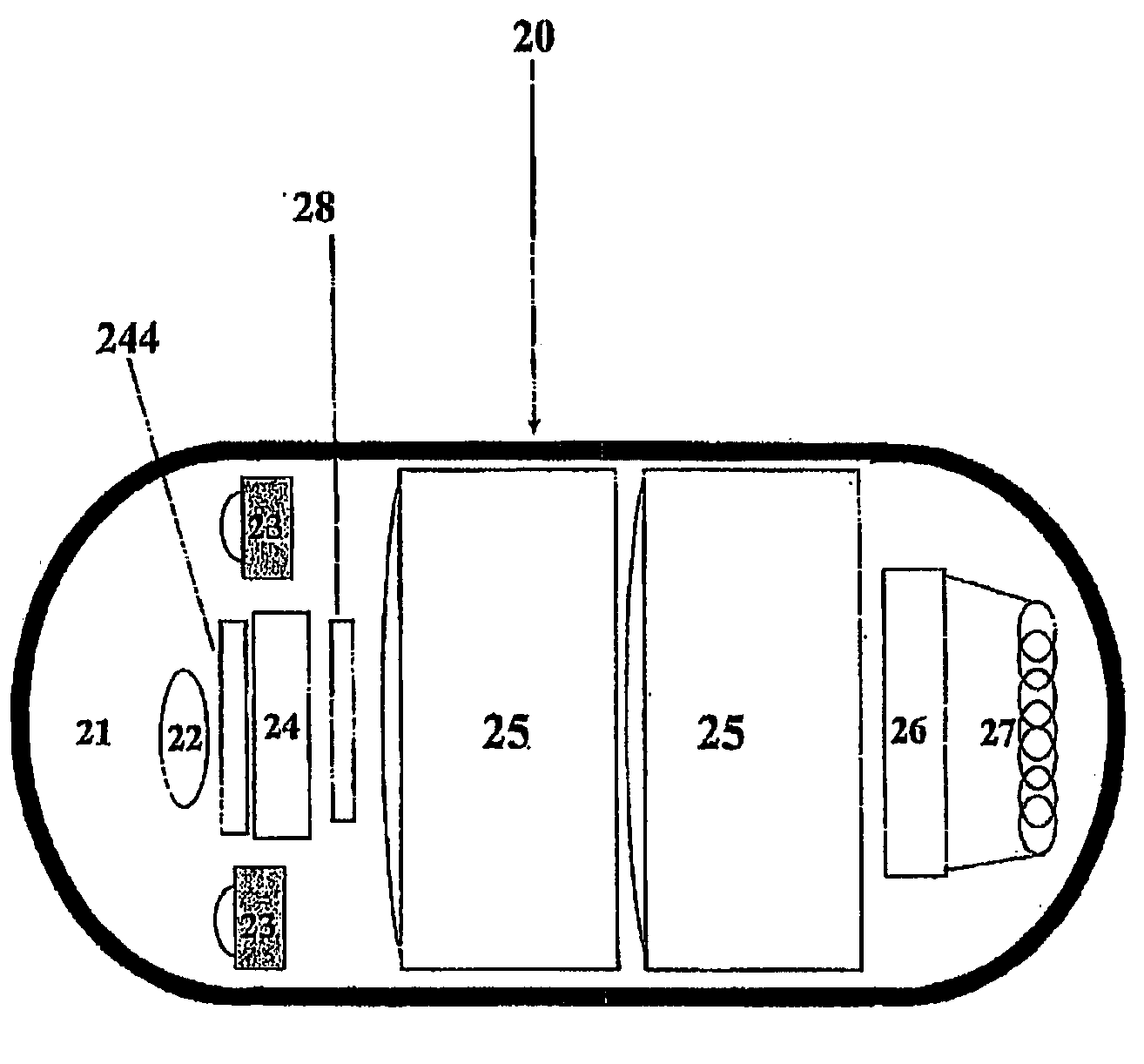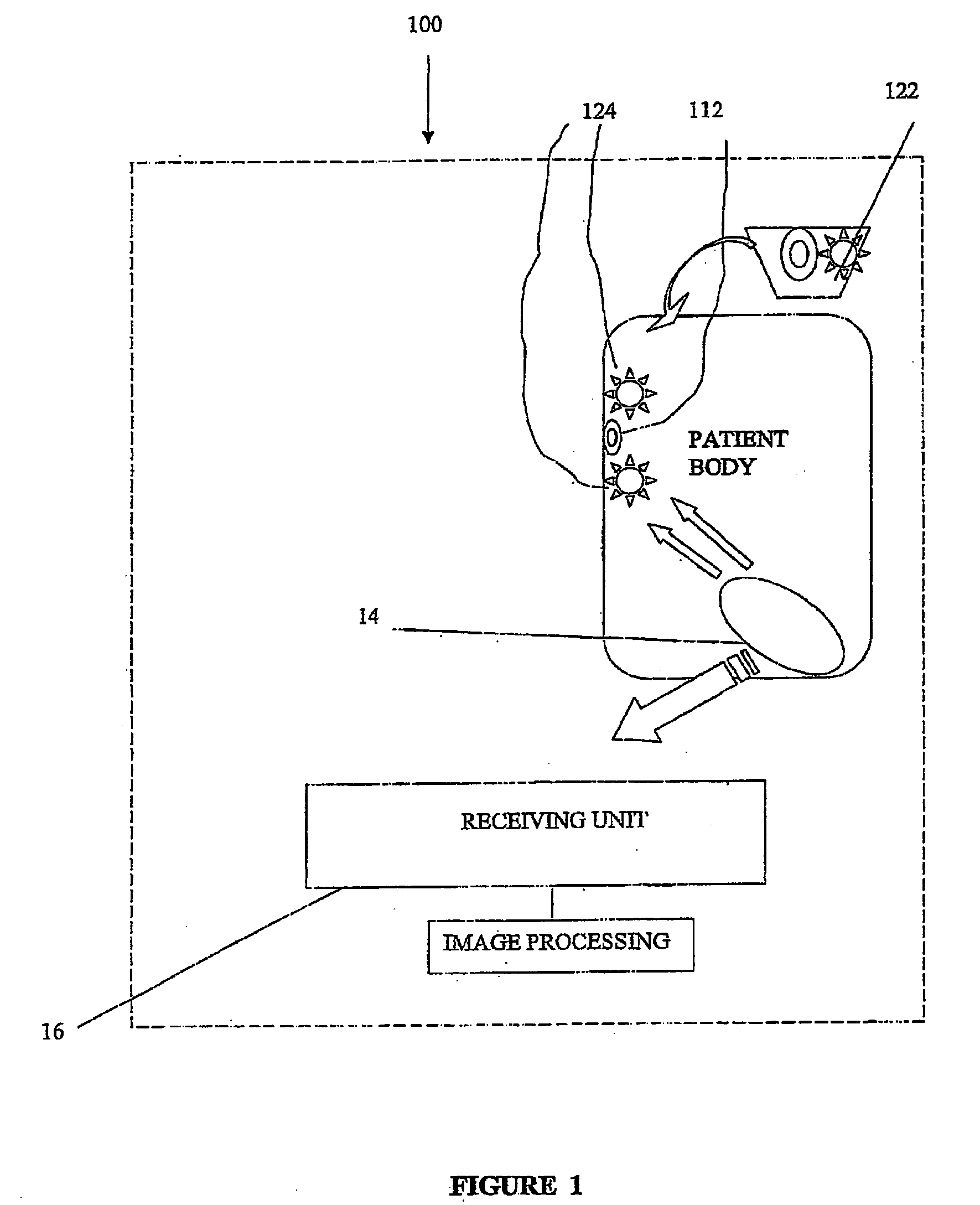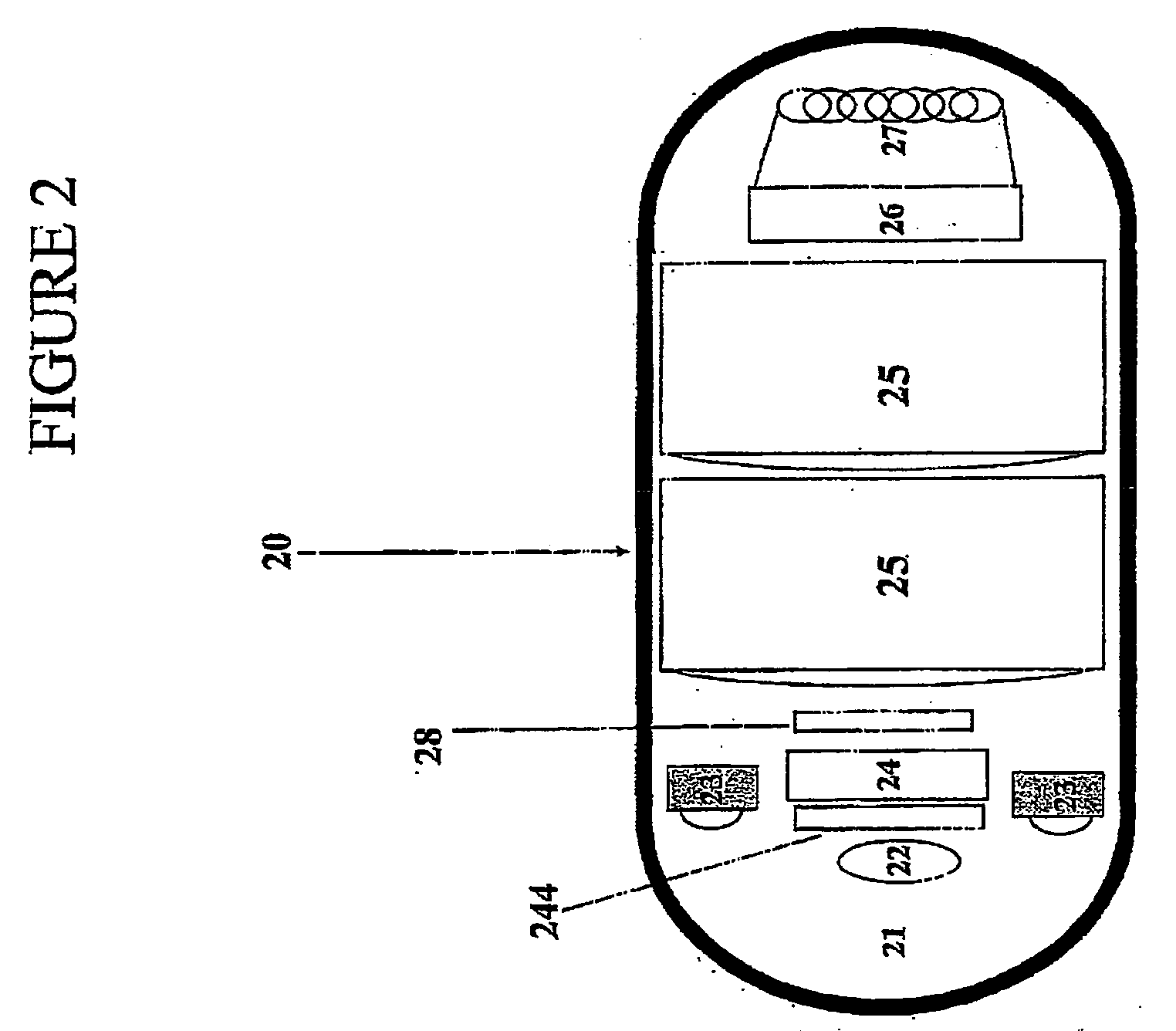Methods, device and system for in vivo diagnosis
a technology diagnostic method, applied in the field of in vivo diagnosis, can solve the problems of high cost of endoscopic examination, poor prognosis, stress, etc., and achieve the effect of facilitating the differen
- Summary
- Abstract
- Description
- Claims
- Application Information
AI Technical Summary
Benefits of technology
Problems solved by technology
Method used
Image
Examples
example 1
[0039] Procedure for PPD Using an Ingestible Imaging Capsule [0040] 1. A patient after a 12 hour fast is given 0.5 liter water; [0041] 2. half an hour later 5-ALA is administered to the patient in the form of a powder of more than 99% purity (commercially available, e.g. from Medac GmbH, Hamburg, Germany). A water / juice solution is prepared at a dose of 15-60 mg / Kg body weight, and is orally ingested by the patient; [0042] 3. 4-7 hours after oral ingestion the patient ingests 0.5 liter of water to wash the GI tract tissue from excess 5-ALA; [0043] 4. 10 minutes after the ingestion of water the patients ingest a Given™ capsule which includes at least one blue LED and a red filter over parts of the CMOS image sensor; [0044] 5. images of the GI tract are obtained in the usual manner (recorded and down loaded to the RAPID™ work station) as well as fluorescent images obtained by the CMOS image sensor. For view of the entire GI tract images are collected for a period of at least 8 hours; ...
example 2
[0051] Procedure I for Chromo-Capsule Endoscopy [0052] 1. 1% sterile solution of methylene blue is sprayed onto the esophagus mocosa; [0053] 2. 10% acetylcysteine (mucolytic agent) is applied to the esophagus mucosa within minutes of the methylene blue application; [0054] 3. A horizontally positioned patient immediately ingests a Given™ M2A™ capsule; [0055] 4. The patient may be slowly rotated; [0056] 5. images of the GI tract are obtained in the usual manner (recorded and down loaded to the RAPID™ work station). For view of the entire GI tract images are collected for a period of at least 8 hours.
example 3
[0057] Procedure II for Chromo-Capsule Endoscopy [0058] 1. 0.5% to 0.8% solution of indigo carmine is sprayed onto the esophagus mucosa; [0059] 2. A horizontally positioned patient immediately ingests a Given™ M2A™ capsule which includes at least one blue LED; [0060] 3. images of the GI tract are obtained in the usual manner (recorded and down loaded to the RAPID™ work station). For view of the entire GI tract images are collected for a period of at least 8 hours.
[0061] It will be appreciated that the positioning and rotating of the patient may enhance positioning and coverage by the capsule of the lumen being inspected. For example, swallowing a capsule while being horizontal positioned ensures the capsule stays in the esophagus for a desired amount of time.
[0062] For efficient view of areas such as the esophagus a specifically designed imaging capsule may be used. For example, a capsule having a plurality of optical pathways may be used for obtaining a wide angle of view. Such a...
PUM
 Login to View More
Login to View More Abstract
Description
Claims
Application Information
 Login to View More
Login to View More - R&D
- Intellectual Property
- Life Sciences
- Materials
- Tech Scout
- Unparalleled Data Quality
- Higher Quality Content
- 60% Fewer Hallucinations
Browse by: Latest US Patents, China's latest patents, Technical Efficacy Thesaurus, Application Domain, Technology Topic, Popular Technical Reports.
© 2025 PatSnap. All rights reserved.Legal|Privacy policy|Modern Slavery Act Transparency Statement|Sitemap|About US| Contact US: help@patsnap.com



